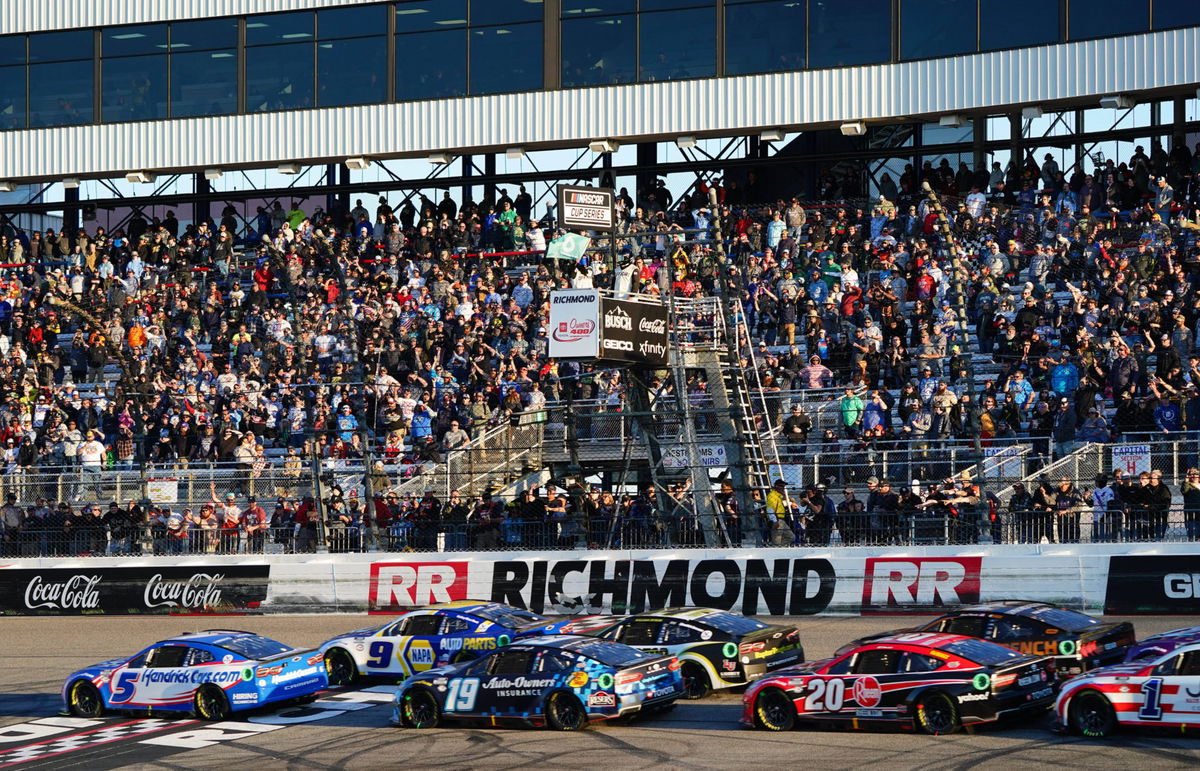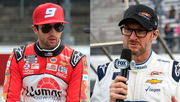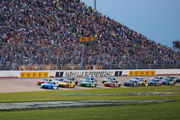
Imago
NASCAR, Motorsport, USA Toyota Owners 400 Apr 2, 2023 Richmond, Virginia, USA NASCAR Cup Series driver Kyle Larson 5 leads the pack to a restart during the Toyota Owners 400 at Richmond Raceway. Richmond Richmond Raceway Virginia USA, EDITORIAL USE ONLY PUBLICATIONxINxGERxSUIxAUTxONLY Copyright: xJohnxDavidxMercerx 20230402_jdm_sx1_008 Image Credits – Via Imago

Imago
NASCAR, Motorsport, USA Toyota Owners 400 Apr 2, 2023 Richmond, Virginia, USA NASCAR Cup Series driver Kyle Larson 5 leads the pack to a restart during the Toyota Owners 400 at Richmond Raceway. Richmond Richmond Raceway Virginia USA, EDITORIAL USE ONLY PUBLICATIONxINxGERxSUIxAUTxONLY Copyright: xJohnxDavidxMercerx 20230402_jdm_sx1_008 Image Credits – Via Imago
The adrenaline-pumping drama that took place at Pocono has NASCAR drivers must be waiting to go again. Now, with another race weekend at the door, they are all set to take on the next race at Richmond, an exhilarating D-shaped asphalt course. Nevertheless, behind the scenes, NASCAR officials are pulling out all the stops, putting their plans into overdrive, and molding the very fabric of the future Cup Series regulations.
Watch What’s Trending Now!
But the question is: how much of a game-changer will these new regulations be once they hit the track? When and how will the drivers get a taste of their benefits, and how will the fans revel in the thrill of it all?
ADVERTISEMENT
Is there anything new we can look forward to in Richmond?
NASCAR has always cared deeply about giving fans a good time and making each race exciting. That’s why the organizers are always experimenting with new rules, penalties, vehicle modifications, and racing courses to keep the crowds coming back for more.
And now, to improve the racing experience at small ovals and road courses, NASCAR officials earlier this season unveiled a new, lower-downforce (by 30 percent) Cup Series regulations package for short tracks and road courses. The package includes tweaks to the Next-Gen car that greatly cut down on the drag those cars generated. All tracks that need “wet weather equipment” will use the setup: Among them are the following tracks: Charlotte Roval, Chicago Street Course, Circuit of The Americas, Indianapolis Motor Speedway Road Course, Martinsville, New Hampshire, North Wilkesboro, Phoenix, Richmond, Sonoma, and Watkins Glen.
The revelation that NASCAR competition authorities want to test a new Cup Series configuration for short tracks and road courses in 2024 has only recently been made. The authorities claim that this will make the race more exhilarating by reducing the margin for error for the drivers and providing more entertainment for the spectators.
ADVERTISEMENT
Originally scheduled to unfurl its wings post the New Hampshire Motor Speedway race, the two-day test instead found itself rescheduled due to a storm brewing on the horizon. So, now Richmond Raceway seems to be the next stop for the new package to be tested on Monday and Tuesday.
As per nascar.com, NASCAR’s highly regarded vice president of Vehicle Performance, Dr. Eric Jacuzzi, agrees that the redesigned splitter should be the aerodynamic component that is evaluated with the highest precision. As Dr. Jacuzzi puts it, “I think the best way to describe it is I want them to get out of the car and say I couldn’t even tell that there was a car in front of me.”
ADVERTISEMENT
Dr. Eric Jacuzzi appears to have great hopes for the vehicles being evaluated in Richmond. The short-track package takes a new approach with the Next Gen car’s underbody, aiming to lessen the lingering impact of filthy air and provide vehicles with a more even aerodynamic playing field.

Imago
JUSTIN HALEY races for the Toyota Owners 400 in Richmond, VA, USA. Richmond United States of America – ZUMAc04_ 20230402_zaf_c04_248 Copyright: xStephenxArcexActionxSportsxPhotox
All six teams taking part in this round of testing—Hendrick Motorsports (Chevy), JGR (Ford), Stewart-Haas (Ford), Kaulig (Chevy), Wood Brothers (Ford), and Legacy Motor Club (Chevy)—must run simulations with and without a filler panel that would cover some of the bracing material behind the new splitter.
ADVERTISEMENT
The second day of the test, on Tuesday, will focus on evaluating Goodyear tire possibilities, specifically adapting a softer, higher-wear compound to the regulations setup.
Watch This Story: Most Gruesome Wreck in NASCAR History That Cut Legendary Driver in Half
Top Stories
Dale Jr. Warns of Deeper Issues as Joe Gibbs Parts Ways With Decade-Long Executive

Chase Elliott’s Popularity Hits New Low as Dale Jr.’s Daytona 500 Return Triggers Record-Breaking Sale

Concerned NASCAR Fans Raise Red Flags Over Safety Issues Ahead of the Daytona 500

NASCAR Faces Uncomfortable Reality as Grassroot Racing Series Rejects Its Formula, Claims Insider

Exclusive: Mark Martin’s Career Philosophy in Both Racing and Life — “Never Lift”

ADVERTISEMENT
Drivers’ Impressions on the New Short-Track Package in NASCAR
It all started in New Hampshire where teams hit the track for the first time with a brand new Goodyear tire formula. After testing on April 25–26 at the 1.058-mile course, drivers Christopher Bell, Chase Elliott, and Brad Keselowski (representing the three Cup Series tire manufacturers) identified the optimal balance between grip and wear. Now, at Richmond, NASCAR will be testing a transition to a softer compound.
Before the New Hampshire race, Elliott remarked, “I thought we made a lot of gains with the tire at that test, and it really opened my eyes to how much better we can make things with just the tire compound on its own.”
Moreover, he stated, “I was really, really excited about some of the things that I saw there, and it was really eye-opening to me just how far we could go with a good tire compound and also made me extremely optimistic that they could do it, and they could do it well.”
ADVERTISEMENT
As per Ryan Preece, “It’s an opportunity for us drivers, NASCAR, and Goodyear to, to get it to where we can put a great show on for the fans but have a compromise for us drivers that’s something that we feel is what we want for a short-track package.”
As NASCAR fans, we recognize the efforts made so far, and we’re certain that the proposed tweaks and modifications will make the sport even more thrilling on short race tracks.
Read More: Chase Elliott Reveals NASCAR’s “Most Boring” Track Ever That Has Always Been a Challenge for Him
ADVERTISEMENT
ADVERTISEMENT
ADVERTISEMENT
ADVERTISEMENT

